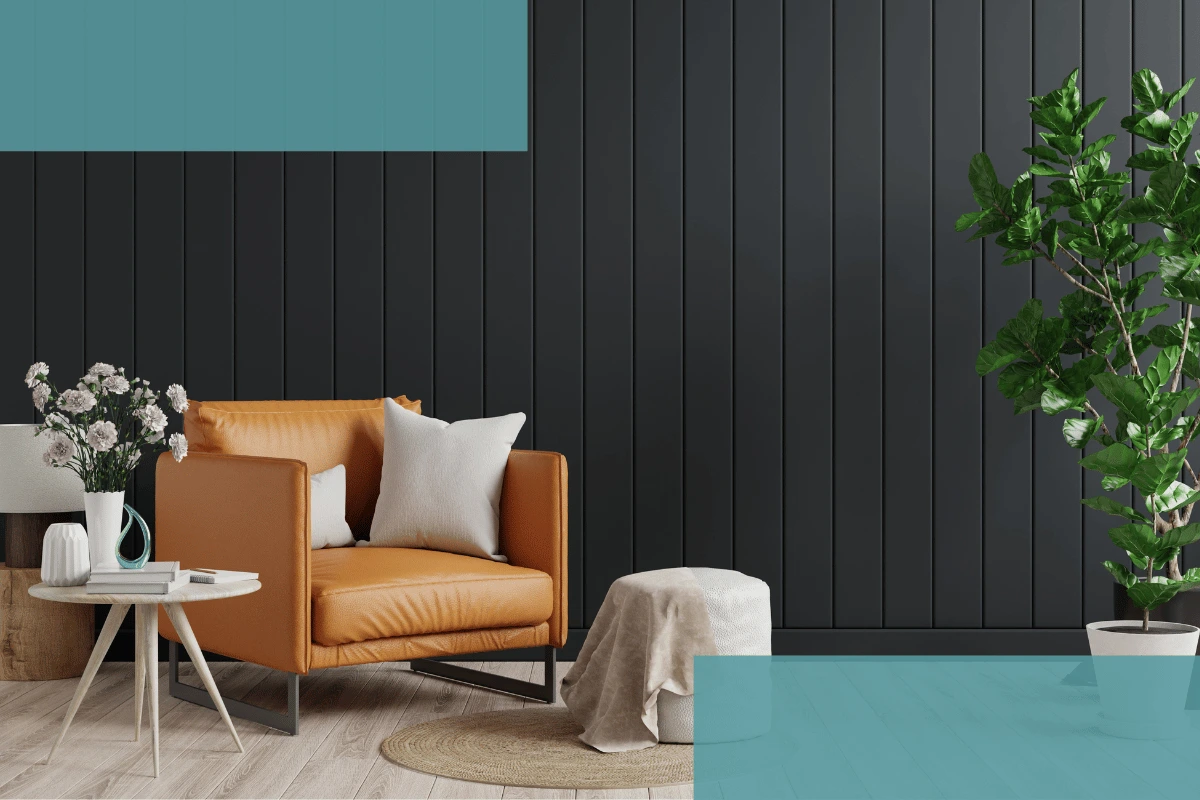“Dark colors can make a room feel cramped.” We’ve all heard this design rule before, and honestly, it’s stopped a lot of people from experimenting with some gorgeous color palettes. But that old decorating wisdom isn’t entirely true.
When you use dark colors the right way, they can actually make your space feel cozy, dramatic, and sophisticated without giving off that claustrophobic vibe everyone warns you about.
The secret isn’t avoiding dark colors altogether; it’s knowing how to work with them. Some of the most stunning interiors you’ve seen probably featured rich, deep shades that made you want to curl up with a good book or host an elegant dinner party. Those spaces didn’t feel small because the designers knew how to balance the darkness with other elements.
So let’s dive into the real tips and tricks for using dark colors without shrinking your space. Once you get the hang of it, you’ll wonder why you waited so long to embrace them.
Pick the Right Shade
Not all dark colors are created equal, and this is where a lot of people go wrong. The undertones in your chosen shade make a huge difference in how the room feels.
Warm undertones, like deep burgundy, rich chocolate brown, or forest green with hints of yellow, create that cozy, enveloping vibe that makes you want to settle in. They work beautifully in bedrooms, living rooms, or dining areas where you want intimacy.
Cool undertones are your best bet if you’re worried about a room feeling too tight. Navy blue, deep gray with blue undertones, or even black with a cool base can actually make a space feel more open when paired with lighter accents. It sounds counterintuitive, but cool shades naturally recede visually.
For inspiration, try a deep charcoal gray with crisp white trim and warm brass accents. Or go bold with a navy feature wall alongside light oak furniture and cream textiles. The key is to think about the whole palette, not just the dark color itself.
Use Dark Colors Strategically
You don’t have to paint every wall dark to get the effect you want. In fact, the most impactful approach is often the most strategic.
An accent wall is a safe place to start if you’re nervous about going dark. Choose one wall, maybe behind the bed or the wall your sofa faces, and paint it in that gorgeous shade you’ve been eyeing. Keep the other walls lighter and you’ll get all the drama without overwhelming the room.
Here’s something most people overlook: dark ceilings. Yes, really. A dark ceiling adds drama and sophistication without closing in the space, especially in rooms with good natural light or high ceilings. It draws the eye upward and creates intimacy in a way that feels intentional, not heavy.
Another option is to bring in dark colors through furniture and cabinetry instead of the walls. A deep navy kitchen island, charcoal dining chairs, or an emerald velvet sofa can deliver that moody vibe while your walls stay neutral and bright.
Balance With Light Elements
This is where the magic really happens. Dark colors need balance, and that comes from pairing them with light elements. If you’re painting the walls dark, offset them with lighter flooring, furniture, or trim. White or cream baseboards and crown molding against dark walls create contrast that keeps the space from feeling too heavy.
Mirrors are lifesavers in dark rooms. They bounce light around and create the illusion of more space. Don’t just hang one and stop there. Think about placing mirrors where they’ll catch and reflect both natural and artificial light throughout the day.
Metallics, glass, and light textiles are also secret weapons. A brass lamp, a glass coffee table, or a pile of cream throw pillows can keep dark colors from taking over. The goal is to add visual breaks that give the eye places to rest.
Layer Your Lighting
Lighting can make or break a dark room. One overhead fixture won’t cut it if you want the space to feel inviting. You need layers of light spread throughout the room.
Start with your main ceiling light, then add floor lamps in corners, table lamps on side tables or dressers, and wall sconces if you want some extra accent lighting. Each light source has a job to do, and together they keep dark walls from feeling oppressive.
The type of lighting matters too. Warm light in the 2700K to 3000K range works beautifully with dark colors and creates a cozy, welcoming atmosphere. That makes it perfect for bedrooms, living rooms, and dining areas. For home offices or kitchens, slightly cooler light keeps things feeling energetic and functional.
Read more: How to Brighten Up a Dark Room with Little Natural Light
Add Texture and Patterns
Flat, dark walls can feel heavy and monotonous. That’s why texture is so important. Layer in rugs with interesting patterns, curtains in contrasting fabrics, throws with different weaves, and pillows that mix materials like linen, velvet, and wool.
Subtle patterns work beautifully in dark rooms. A geometric rug, striped curtains, or wallpaper with a soft, understated print on an accent wall can add depth and interest without competing with your dark color choice.
Mixed materials are another smart way to break things up. Pair smooth with rough, matte with glossy, and soft textiles with harder surfaces. This variety keeps the eye engaged and prevents the space from feeling flat or one-dimensional.
Read more: A Guide to Choosing the Perfect Living Room Rug for Your Lafayette Home
Mind the Room Size and Ceiling Height
Room size and ceiling height matter when you’re working with dark colors, but they don’t have to hold you back.
In smaller rooms, a strategic approach works best. That might mean one dark accent wall instead of all four, or dark furniture pieces instead of dark walls. Horizontal stripes or patterns can make a room feel wider, while vertical elements can make low ceilings feel taller.
In larger rooms, you have more freedom to go bold. Big spaces can handle more dark colors without feeling closed in. You might even try multiple dark walls or larger doses of dark through furniture and textiles.
Proportion and scale are important too. If you’re painting a piece of furniture dark, make sure it fits the room. A huge armoire in a small bedroom will overwhelm the space, while the same piece in a larger room can create beautiful drama.
The most important thing to remember is that you don’t have to go all-in right away. Even small touches of dark color can make a big impact. Try dark throw pillows, a charcoal area rug, or deep-toned artwork and see how it feels. You may be surprised at how much you love the cozy, sophisticated atmosphere that darker shades create.
Ready to transform your space with rich, dramatic color? We offer complimentary interior design consultations for homeowners in Lafayette and the greater Acadiana area. Book an appointment with us and let’s find the perfect way to bring those bold, beautiful shades into your home.

